IZUMO: Glimpses of the Unseen
In the 19th century, writer Lafcadio Hearn (Koizumi Yakumo) helped introduce Japan to the wider world. Peter Barakan visits Izumo to learn about the natural and unseen realms that Hearn treasured.
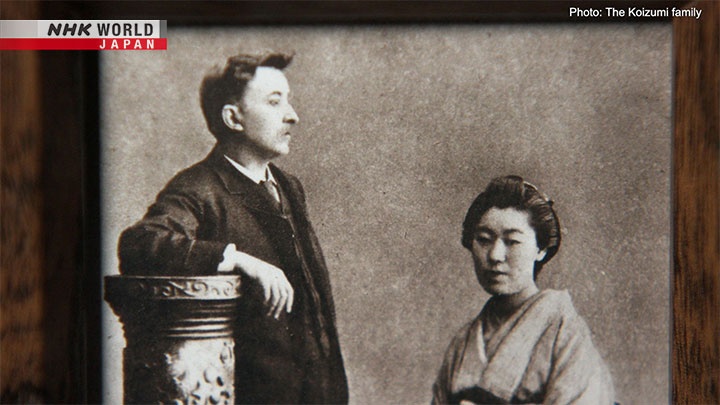
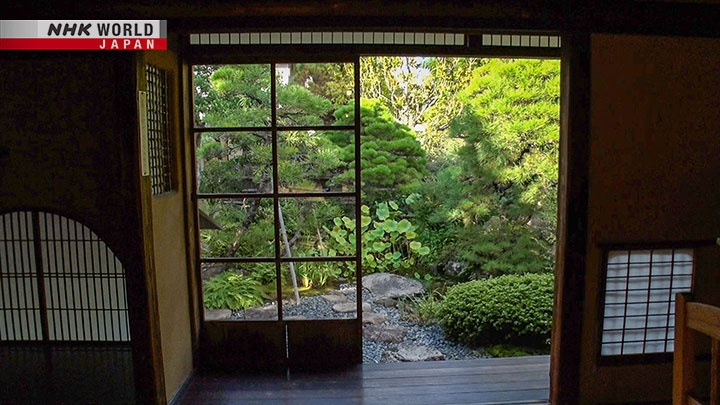
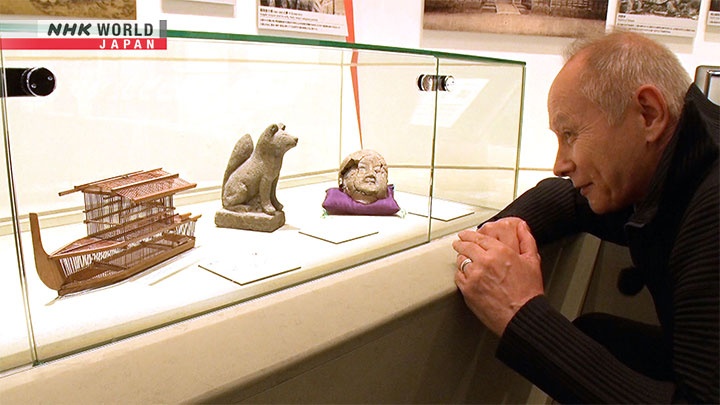
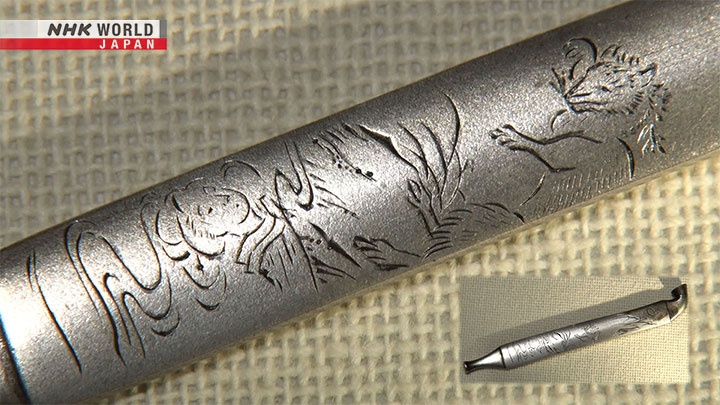

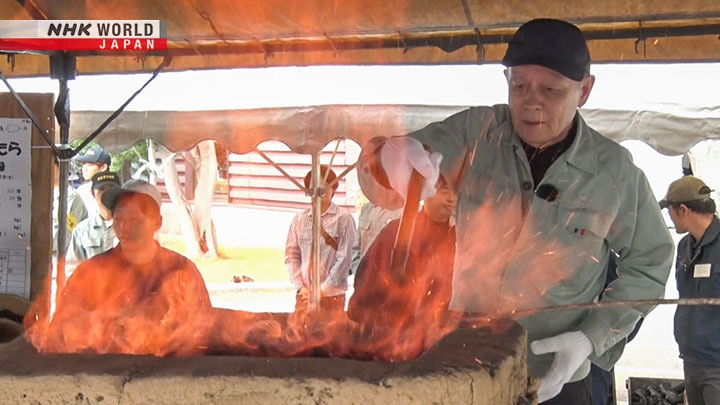
Transcript
Beautiful clouds swirl and grow.
This region is actually known as "emerging clouds."
In Japanese: "Izumo."
Izumo is special.
Traditionally, it's a gathering place for Japan's many deities.
This "home of the gods" has various links to the supernatural.
Izumo was the setting for many of Japan's ancient tales.
Even after decades in Japan, the mere mention of the name "Izumo" conjures up images of a world apart.
Occasionally in Japan you see rocks like this, with a little shrine on top.
This region was once home to another outsider who introduced aspects of Japan to the wider world.
Lafcadio Hearn, a writer from Ireland who came to Japan in the late 19th century.
At a time when Japan was still largely unfamiliar in the West,
he produced many written works that introduced Japanese culture in English.
His readers included world-renowned scholars, such as the physicist Albert Einstein and anthropologist Claude Levi-Strauss.
Hearn wrote about the cultural identity of Japan, and a key source of motivation was the time he spent in Izumo.
I traveled to Izumo to find out what exactly Hearn liked about Japan,
the country to which he was so strongly attracted.
Along the way, I learned a little about some of Japan's deities,
which are said to be found throughout the natural world.
I saw how people interact with that unseen realm.
Natural spirits and buddhas...
I think both watch over us.
And I heard about the nature of Japanese ghosts.
He wasn't talking about spirits who
nurture grievances or curse somebody.
He was talking about wanting to
make things right, even after death.
In Izumo, I'm hoping to see Japan from a new angle.
Izumo is a region within the Shimane Peninsula, with Lake Shinji at its center.
The main city is Matsue, which emerged several hundred years ago as a castle town.
Waterways meander through the scenery.
Matsue is, in fact, known as the "City of Water."
Its features include charming samurai residences.
Hearn came to Matsue in 1890.
After many centuries, the age of the samurai was over, and society was rapidly modernizing.
Foreigners were invited to Japan to share their cultural and technical expertise.
Hearn himself arrived as a magazine reporter, but soon became an English teacher.
He developed a deep appreciation for the traditional culture that he felt Japan was abandoning.
He spent the rest of his life in Japan and became a naturalized citizen with the name Koizumi Yakumo.
"Glimpses of Unfamiliar Japan" was the first book he published after arriving.
It tells of his time in Matsue, where he started working as an English teacher.
He describes Matsue as "The Chief City of the Province of the Gods."
This is his former home.
Yakumo lived in Matsue for only 15 months, but his time here inspired a lasting love of Japan.
Bon-san, nice to see you.
- It's been a while!
- Yes!
Great to see you!
Koizumi Bon, a folklorist and professor, is Yakumo's great-grandson.
I first met him nearly 20 years ago, when working on a TV program in the Japanology series.
He's an expert on Hearn's life, and builds on his ancestor's legacy.
This way.
Oh, it's lovely, isn't it? A nice garden.
Yakumo wanted to live in
a former samurai home.
Somewhere with a Japanese-style
garden. This is what he found.
Yakumo spent a lot of time here.
He took pleasure in observing the changing appearance of the trees and flowers as the seasons passed.
Do we know much about what his daily life was like when he was living here in Matsue?
He taught at a school every day.
But after work, at home,
he'd change into Japanese clothing.
And he'd relax on a cushion,
with a long Japanese pipe.
He'd light it up, and
gaze out at the garden.
Those were happy days
for him, I think.
To Yakumo, the garden's beauty was only one aspect of its appeal.
He liked insects, especially
those that make sounds.
Such as crickets and cicadas.
Higurashi, for example.
They're active at twilight.
Hearn loved them. He referred to
them as "twilight musicians."
He paid special attention to
the sounds of small creatures.
That was a distinctive element
of his personality.
The sounds of insects in summer and autumn are a cherished feature of life in Japan.
Hearn's sensitivity to short-lived experiences may - sadly - be traceable to his childhood.
Patrick Lafcadio Hearn was born on a small Greek island in 1850, to an Irish father and a Greek mother.
At the age of 4, his parents separated, and Hearn was taken in by his great-aunt.
His mother's absence left an emotional scar that never healed.
Hearn's great-aunt enrolled him in a Catholic school,
but he rebelled against the strict rules, and became something of a loner.
At the age of 16, an accident while he was playing blinded him in his left eye.
After that, he became self-conscious about his appearance.
But this partial loss of sight seems to have awakened a new interest.
In an unseen world, a supernatural realm.
A world that he could enter by harnessing the power of his imagination - his mind's eye.
Within Hearn's former home is the desk he once used.
Take a seat.
Oh, I see. So he'd be sitting here and... this is where he would write.
And he had to be this close to the paper so that...
Ah, so this is specially built for him?
Yes. He bought a chair, and had
a desk made at just the right height.
It's zelkova wood.
A carpenter built it.
Hearn could see very little
even with his remaining eye.
The Lafcadio Hearn Memorial Museum exhibits objects from that desk.
Here's something he treasured.
- An insect cage.
- I've never seen an insect cage that looked like that.
That's beautiful.
Listening to the sounds in his garden wasn't enough.
Hearn put insects in a cage next to him, so that he could enjoy them at close quarters.
So perhaps because his eyesight was not very good, his other senses may have been enhanced to compensate for that?
I think so. He listened to insects,
and the sounds of nature in general.
They were important elements of how
he perceived the world around him.
In the morning, street merchants
would sell vegetables and firewood.
They'd call out, "Firewood!"
or "Turnips!
And to Hearn, that was
a form of music.
He tuned into Japan
with all five senses.
And he shared with the world
the information he received.
Hearn was inspired in part by Japan's oldest chronicle, a volume of ancient tales called "Kojiki."
He loved the many deities that appear in its pages, such as Ebisu and Daikoku.
Spiritual life in Japan was not shaped by a single, patriarchal entity.
Here, the gods were everywhere and came in many different forms.
Hearn liked that idea - and he knew that for Japan's many gods, Izumo was a special place.
Every year, the deities are said to gather by the sea at Inasa in western Izumo.
From the shore, they make their way to a sacred shrine.
Hearn certainly wasn't going to miss out on visiting that.
Izumo Taisha.
It's a shrine with over a thousand years of history.
Here's how Hearn described his first visit, in 1890.
"Already I can hear a heavy sound, as of surf, within the temple court."
"And as we advance the sound becomes sharper and recognizable..."
"A volleying of handclaps."
Good morning.
Hello. I'm a curator of
the Shimane Museum of Ancient Izumo.
Oka Kozo is an expert on Izumo Taisha and its connection to Hearn, later to become Koizumi Yakumo.
I was imagining how Yakumo would have come... what, 130 years ago?
He arrived after dark.
He would have approached
the shrine by lantern light.
Around him were pine trees.
Above, the night sky.
He would have enjoyed the sounds,
the smells, and the evening chill.
It must have been
quite the experience for him.
Enshrined here is Okuninushi-no-kami.
This deity brought the earthly realm into existence.
When he started out, he wasn't
omniscient or omnipotent.
When he was still young,
he was actually quite weak.
But when someone was in need,
he wouldn't hesitate to help.
It's almost like he was quite human-like.
Yes. He's not thought to live
in a distant, totally separate world.
He's nearby, unseen,
watching out for us.
I believe Yakumo found
that idea very appealing.
"Kojiki" tells us that Okuninushi-no-kami was asked to cede control of the earthly realm to the sun deity.
He asked for something in return: the construction of a shrine.
Izumo Taisha's inner sanctum is a very sacred place.
Normally, only priests are allowed to go in.
But Yakumo received special permission and became the first foreigner to enter.
In those days, the chief priest of Izumo Taisha was Senge Takanori.
The Senge family has served at Izumo Taisha for generations.
They are actually said to be descendants of the deities.
Senge Takanori heard about Yakumo's deep interest in Japan,
and that's why he invited him into the inner sanctum.
Yakumo was guided directly
by descendants of deities in "Kojiki."
I find that very interesting.
I'm sure Yakumo must have been very aware that this is a really special place,
and that he as a non-Japanese, and especially having pretty much just arrived in Japan,
was getting very, very special treatment.
I wonder how he felt about that.
In terms of modernization, Izumo was
lagging behind the rest of Japan.
Traditional sensibilities and
aesthetics lingered in this area.
I think Yakumo must have loved that.
This was an age when new ideas
were arriving from the West.
Senge knew he couldn't simply
stick to ancient Japanese tradition.
He was looking for ways to adjust
to the changes that were happening.
Koizumi Yakumo represented a chance
to rediscover forgotten things.
Both parties approached the meeting
with an open mind and relished it.
Izumo Taisha, where Japan's deities gather, welcomed a complete outsider.
It was a remarkable display of inclusivity.
All over Matsue, you see statues of deities and buddhas.
I'm guided to my next stop by a local antiques dealer.
- Here we are. Go ahead.
- Oh, I see.
Enshrined within this beautiful hall is a Buddhist figure called Yanagi Jizo.
Locals have looked after it for over 400 years.
Yanagi Jizo is said to offer
protection against fire.
This whole area once caught fire.
Everything burned down.
Everything, that is, except this hall.
People started coming here to seek
protection from outbreaks of fire.
They'd come once a month.
People continue to take good care of the statue.
I see there are fresh flowers here as well.
I've never bought any flowers.
Flowers like this.
People just seem to bring them.
- That's quite strange!
- I don't know who does it. But I'm very grateful.
Local shopkeepers come here
before they start work each day.
So I think maybe they're
the ones bringing flowers.
Fascinating.
A statue like this represents a connection between everyday life and the unseen world.
Foxes offer another example.
Let's hear what Lafcadio Hearn wrote about them.
"All foxes have supernatural power. There are good and bad foxes."
"A fox has the power of assuming any shape and of making itself invisible."
This is a tobacco pipe that Yakumo carried with him.
It shows a woman. And also a fox.
This reflects a popular belief that foxes are able to assume different forms.
People had strong spiritual convictions.
Nature and the unseen inspired
a sense of awe in them.
Yakumo related to that mindset, which
he knew was very common in Izumo.
Lake Shinji is another place that may have prompted thoughts of the unseen.
Yakumo often came to enjoy the sunset.
"All the fainter colours change every five minutes...
...wondrously change and shift like tones and shades of fine shot-silks."
People in Matsue continue to cherish memories of Lafcadio Hearn.
This pharmacy has been around for over 250 years.
And Hearn, it seems, was a customer.
- Excuse me!
- Welcome.
I've heard that Koizumi Yakumo used to come to this shop.
Do you know anything about that?
There was a maid who worked for him.
She'd buy beer here,
and he would drink it.
I'm told that he preferred
dark, Irish-style beer.
Matsue was a city where he could enjoy a reminder of Ireland.
He was very open-minded.
He was able to embrace the culture,
fully accept it in his mind.
That was a feature of his character.
I really respect that.
As a Matsue native,
it makes me happy.
It was in Matsue that Yakumo met Setsu, a member of a former samurai family.
As Japan modernized, her family fell on hard times.
To support them, Setsu started working for Hearn.
Before long, they got married.
Old tales, passed down in Matsue, helped forge a bond between them.
In the evenings, Setsu would recount these stories.
Hearn would write them down in English, and eventually have them published.
"Kwaidan" is a collection of Japanese ghost stories retold in Yakumo's own words.
In one story, a blind musician has his ears cut off to free him from spiritual possession.
In another, a man falls in love with a spirit in the form of a beautiful woman.
But he betrays her trust, and she leaves him.
These were more than just tales of the supernatural.
Hearn was aiming to convey a message.
Good evening.
Hello. I'm Ichijo, a storyteller
for a Matsue ghost tour.
For several years now, Ichijo Yasuko has been presenting Yakumo's ghost stories as a tour guide in Matsue.
This is the setting for one of
his stories, the temple Daio-ji.
This isn't too far from the place where Yakumo lived.
He knew a lot of ghost stories, but the one set here was a special favorite.
"The Woman Who Buys Syrup."
There once was a small candy shop.
Each evening, something would happen
just when the shop was about to close.
A pale woman with a blueish face
and a white kimono would step inside.
She would hold a small amount
of money and a small, dirty bowl.
"This is all the money I have,"
she would say.
"Please, can you sell me some syrup?
Even just a little?"
The candy seller grew concerned about the woman's pale complexion.
So one night, he gathered some friends, and followed her.
She led them to a tomb in the temple's graveyard.
There, all of a sudden, from within the ground, came the sound of a crying baby.
In a panic, they unsealed the tomb.
Within, they saw the corpse of
the woman who nightly visited the shop.
And next to her was a living baby,
miraculously born in the tomb.
The townsfolk thought, "She wasn't
able to breastfeed her child."
"That's why she rose from the grave.
To get syrup for her baby."
A mother's love is stronger than death.
It's a good story. It's a good story.
Yakumo loved it. When he heard it,
it's said he'd have tears in his eyes.
He was separated from his mother
at age four and never saw her again.
He missed her really badly.
The story depicts a mother who cares
for her child even after death.
And I think that really
resonated with him.
Japanese ghost stories are scary in a slightly different way.
And then the ones that Yakumo chose to translate into English...
But it seems like he's not necessarily trying to scare people.
From your point of view, what do you think he was trying to tell us?
He wasn't talking about spirits who
nurture grievances or curse somebody.
He was talking about wanting to
make things right, even after death.
That comes across to people.
It's something we can all understand.
People listening to these tales will
tell me, "I identified with that."
Some of the messages in
his stories clearly resonate.
Lafcadio Hearn published many volumes of stories.
It's said that his determination to share Japanese culture with the world was nurtured in part by his wife.
So what was Setsu like?
This book offers a glimpse.
It's a historical novel about Setsu's life with Hearn, from her perspective.
The author is a screenwriter who has written many TV dramas with female protagonists: Tabuchi Kumiko.
They say that behind every great man
is a woman, but they get no attention.
That happens a lot in Japan.
And I've always been interested
in the stories of women like that.
Does he write in his books much about Setsu and his relationship with her?
He does. As a Japanese woman,
it makes me happy.
He highlights Setsu's beautiful nature
and her empathy for others.
That's how complimentary he was.
Here's how Tabuchi describes Setsu in her novel.
"Setsu learned Hearn's quirks and came to understand his likes and dislikes as if they were her own."
"To Hearn, this was a form of magic."
"How had his thoughts been transmitted so clearly?"
Setsu made herself a glossary in English to communicate with Hearn, who was still struggling with Japanese.
She wrote down the sounds of the English words he used, and made a concerted effort to form a connection with him.
They developed their own special form of communication.
Setsu sought to understand
what he wanted and needed.
That really drove her.
His recognition of Japanese kindness
turned to admiration of her.
What do you think attracted each of them to the other one?
Hearn was sensitive.
A warm, considerate person.
And a wordsmith.
That was appealing.
I think Hearn felt a desperate
longing for the mother he had lost.
Setsu was a perfect match for him.
He must have felt he was finally
in a place where he belonged.
She was so accepting.
He felt love in its ultimate form.
When he was away from home, Yakumo used the Japanese he'd learned to write this letter to Setsu.
"I received your adorable letter."
"I am so happy."
"Thank you, my love."
The nights Yakumo spent listening to the tales told by his wife may well have opened a window to the soul of Japan.
Yakumo always had warm feelings for this country.
And I can easily appreciate that.
He was born to parents of different nationalities, then had a tough childhood.
He spent time in the UK, the US, and the Caribbean.
It's said that he came to accept different cultures without preconceptions.
I share that sensibility with him, I think.
I'm from the UK. My father was Polish.
And my mother, though born in London, was half-Burmese.
I somehow never really felt British.
And looking back now, that may have contributed to my staying in Japan for so long.
I've never really felt an inferiority complex as a result of being an outsider.
But it gives you a different take on the place you're in, rather than being totally an insider.
And I think I prefer that.
As an outsider, I think I'm sometimes conscious of things that Japanese people may take for granted.
Perhaps Yakumo felt the same way.
This region in southern Shimane is Oku-Izumo.
Another place with close links to ancient stories.
Here, it's said that a deity descended from the heavens and introduced a certain technology.
Tatara steelmaking.
A unique local method has been passed down through the centuries.
To learn more, I visited a small mountain village.
This is the only place in Japan where you can visit a tatara workshop and see all the traditional equipment.
I was shown around by a man who looks after the building.
This is a steelmaking furnace.
First, you build these tubs.
You put lots of charcoal in here,
burn it, then add iron sand.
And you repeat that.
The work takes three days
and three nights to complete.
The output is a block of metal
three meters across.
The highest quality steel is called tamahagane.
It can only be produced in small quantities.
Even with modern techniques, it's very difficult to make.
Tamahagane is both strong and supple.
It was once used all over Japan to make swords.
The mountains in Oku-Izumo are rich in the necessary iron sand.
It was collected by pouring sediment into specially built water channels.
Former mining sites became terraced rice fields that supported the local community.
Around a hundred years ago, modernization brought traditional Japanese steelmaking to an end.
However, half a century later, it made a comeback.
People in Oku-Izumo revived the discontinued industry.
Traditional Japanese swords are admired around the world as works of art,
but they cannot be made without tamahagane.
The goal was to preserve the old method of producing this material.
The head of the project, and the leader of the tatara steelmakers, is Kihara Akira.
Kihara and his team devote a great deal of energy to sharing aspects of their craft with younger people.
I went along to one of their events.
This is a small-scale version of what we saw... but pretty hot as well.
Just from this distance.
Even in his 90s, Kihara is still at the heart of the action.
This method has been not in practice for a hundred years now.
But you're still preserving it.
What makes it so special in your eyes?
We're protecting and passing on
a traditional form of steelmaking.
Natural materials are painstakingly
collected and shaped in a furnace.
It took centuries to perfect.
And by doing these events, do you get, for example,
young people interested in this process and wanting to carry it on?
This year, I'm happy to say
we recruited one new trainee.
- Peter, welcome.
- Ah, hello.
We're about to add iron sand.
Would you like to try this?
OK.
I felt a bit nervous! But I gave it my best shot.
OK. Suited up now.
Don't want to take any chances with those flames.
This is the iron sand.
I'll take half. So hot!
Good luck.
The furnace reaches 1,400 degrees Celsius.
Iron sand must be added evenly on each side, so that it melts properly.
For anybody to be standing up there for hours per day doing that,
it's... even a few minutes is really, really hot.
It's a little bit scary, actually, because if those flames get blown by the wind into your face or something,
it's not pleasant at all.
Next, I tried another important job.
And... go!
And... go!
In order to keep the temperature constant, a huge set of bellows is used to fan the flames.
Stepping on the bellows pushes air through a tube into the furnace.
In the past, tamahagane production required teams to work nonstop for three days and three nights.
Yeah, I mean, I was quite honestly just quite nervous being up there for a start.
It takes perseverance and strength.
Plus all five senses. It's hard work.
You only need to try it once to know how hard it is.
The fierce heat of the furnace melts impurities, which are skillfully removed, leaving behind high-quality steel.
You end up with a big block of molten metal.
And... lift!
It weighs 50 kilograms!
Fantastic!
Within the dark block are areas of sparkling silver.
This is tamahagane, the raw material of a Japanese sword - katana!
In Oku-Izumo, efforts are being made to build a bright future for traditional steelmaking.
Tanabe-san, good morning. Nice to meet you.
Nice to meet you.
It's a pleasure.
Tanabe Choemon is involved in forestry and various other local businesses.
His family engaged in tatara steelmaking for over 500 years.
Their work brought prosperity to the town.
How many generations has it been now?
- I'm the 25th.
- Wow.
OK, that's a bit of history, isn't it?
After a one-hundred-year gap, Tanabe decided to revive the family steelmaking tradition.
I brought something to show you.
It's an oil lamp, but I'm not quite sure what it's for.
This is more than just a flame.
When we revived steelmaking, we got
this from Izumo Taisha's head priest.
It's a sacred flame, intended
to keep the tatara tradition safe.
Sacred flames like this are used in religious rituals.
Fire straight from Izumo Taisha, the gathering place of the gods.
Tanabe revived the tatara tradition after an event at a local school made him see how much he loved his hometown.
I walked in, and there were
around 40 students.
I asked if that was one class.
"No," the principal told me,
"This is the whole school."
In the past, around 10,000
people lived here.
But when we stopped making steel,
the population dropped.
Anyway, I was shocked.
And I reacted on the spot.
I promised the students I would
revive tatara steelmaking.
By the time they grew up,
that industry would be back.
And I swore to them that they
would be able to find work here.
Tatara steelmaking was revived to boost the town's vitality.
New products were created.
First, we made golf putters.
An interesting idea... was it successful?
Tatara steel putters were unique.
They drew a lot of attention.
The techniques that we use
are unchanged from centuries past.
But we decided that our products
should reflect modern times.
Personally, I find that there's a kind of serenity about Izumo which is a big part of its attraction.
I hope that can be preserved as well.
You mentioned serenity.
If you listen now, you won't
hear any artificial noises.
You can hear the wind,
and other sounds of nature.
Water, birds, insects.
This is a luxury that people around
Japan should be more aware of.
We have many qualities
not found anywhere else.
Izumo, home of the gods.
Here, the traditional Japan that Koizumi Yakumo loved so much is still alive and well.
Like Yakumo, I have been sharing information about Japan for many years - in the Japanology series of TV programs.
On this trip, I found myself thinking of Yakumo as a kind of kindred spirit.
I feel that what this program, Japanology, has been doing over the last 20 years is...
in a way I think it's a continuation of what he was doing.
And perhaps, from here on, I might think about it more consciously. I don't know.
But if there's a good person to be influenced by, he may be it.